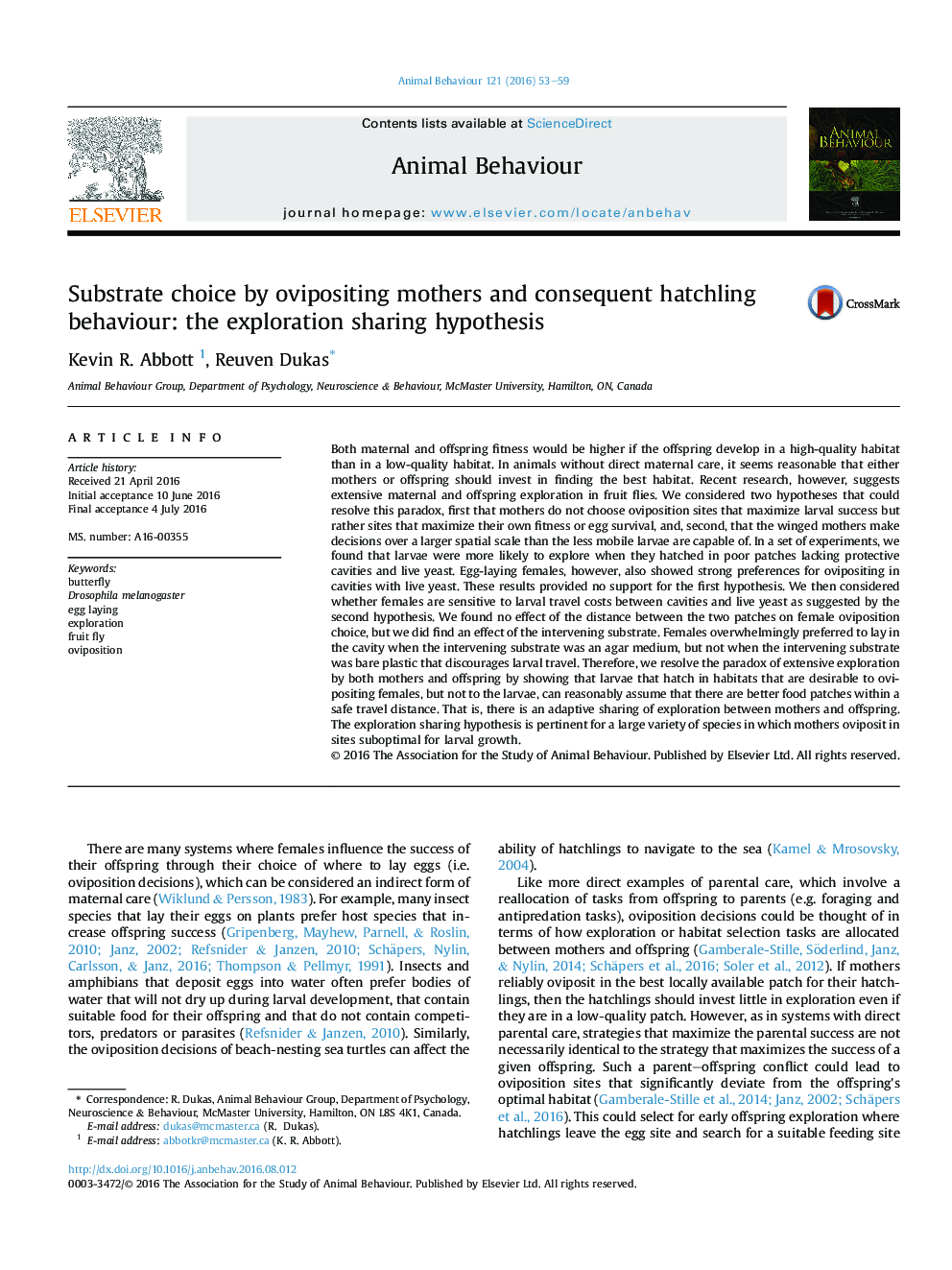| Article ID | Journal | Published Year | Pages | File Type |
|---|---|---|---|---|
| 8488857 | Animal Behaviour | 2016 | 7 Pages |
Abstract
Both maternal and offspring fitness would be higher if the offspring develop in a high-quality habitat than in a low-quality habitat. In animals without direct maternal care, it seems reasonable that either mothers or offspring should invest in finding the best habitat. Recent research, however, suggests extensive maternal and offspring exploration in fruit flies. We considered two hypotheses that could resolve this paradox, first that mothers do not choose oviposition sites that maximize larval success but rather sites that maximize their own fitness or egg survival, and, second, that the winged mothers make decisions over a larger spatial scale than the less mobile larvae are capable of. In a set of experiments, we found that larvae were more likely to explore when they hatched in poor patches lacking protective cavities and live yeast. Egg-laying females, however, also showed strong preferences for ovipositing in cavities with live yeast. These results provided no support for the first hypothesis. We then considered whether females are sensitive to larval travel costs between cavities and live yeast as suggested by the second hypothesis. We found no effect of the distance between the two patches on female oviposition choice, but we did find an effect of the intervening substrate. Females overwhelmingly preferred to lay in the cavity when the intervening substrate was an agar medium, but not when the intervening substrate was bare plastic that discourages larval travel. Therefore, we resolve the paradox of extensive exploration by both mothers and offspring by showing that larvae that hatch in habitats that are desirable to ovipositing females, but not to the larvae, can reasonably assume that there are better food patches within a safe travel distance. That is, there is an adaptive sharing of exploration between mothers and offspring. The exploration sharing hypothesis is pertinent for a large variety of species in which mothers oviposit in sites suboptimal for larval growth.
Related Topics
Life Sciences
Agricultural and Biological Sciences
Animal Science and Zoology
Authors
Kevin R. Abbott, Reuven Dukas,
